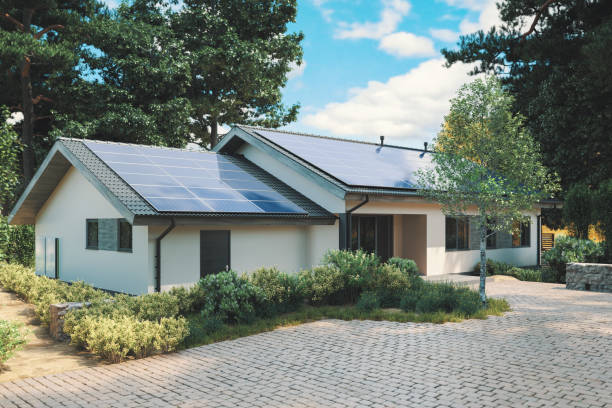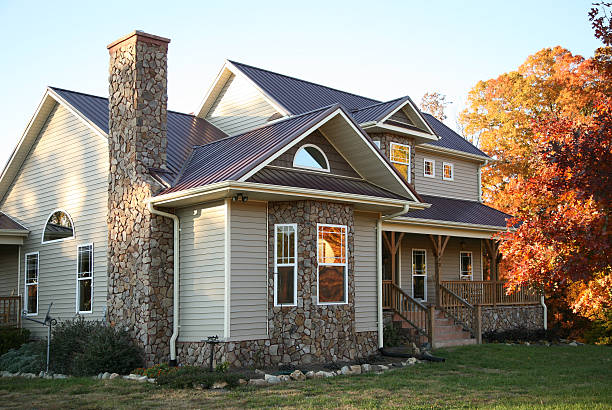How to Spot a Roof Leak Before It’s Too Late
Roof leaks can be a homeowner’s worst nightmare, often leading to costly repairs and significant damage to your home’s structure. Unfortunately, roof leaks are not always immediately obvious, and by the time they become visible inside your home, they may have already caused considerable damage. The key to preventing expensive repairs is identifying and addressing roof leaks as soon as possible.
In this guide, we’ll show you how to spot a roof leak before it’s too late, so you can take proactive steps to protect your home.
Look for Water Stains and Discoloration
One of the most obvious signs of a roof leak is the appearance of water stains or discoloration on your ceilings or walls. These stains often appear as brown or yellowish spots, usually in areas where water has seeped through the roof and traveled down your interior walls.
Where to Look:
- Ceilings: Check for spots that are wet or damp, especially in areas directly beneath your roof (like attics or upper floors).
- Walls: Look for streaks or discoloration around windows, corners, or areas where the roof meets the walls.
If you notice any stains, it’s a clear sign that water is entering your home, and you should inspect your roof as soon as possible.
Check Your Attic for Moisture or Mold Growth
The attic is often the first place where a roof leak becomes noticeable, especially if you have easy access. If water is entering through your roof, it will often pool in the attic before dripping down into the walls or ceilings below.
What to Look For:
- Wet Insulation: If your attic insulation feels damp or soggy, it could be a sign that water is getting into the attic.
- Mold or Mildew: Mold and mildew thrive in damp environments, so if you notice a musty smell or visible mold growth, this may indicate a persistent leak.
- Visible Drips or Pools of Water: If you spot visible moisture in the attic, this could be a clear sign of an active leak.
Regularly inspecting your attic, especially after heavy rain or storms, will help you identify leaks early and prevent further damage.
Examine the Roof’s Surface
While it’s important to check for signs of leaks inside your home, you should also inspect the roof’s exterior regularly. Wear and tear on your roof can lead to cracks, gaps, or other issues that may allow water to infiltrate.
Areas to Inspect:
- Shingles: Check for missing, cracked, or curled shingles. Damaged shingles are one of the most common sources of roof leaks.
- Flashing: Flashing around chimneys, vents, and skylights is designed to prevent water from seeping under the roofing material. Inspect flashing for cracks, rust, or signs of wear.
- Gutters and Downspouts: Clogged gutters can cause water to pool on the roof, increasing the risk of leaks. Make sure your gutters are free from debris and draining properly.
- Roof Valleys: Valleys are where two roof planes meet and are often a vulnerable spot for leaks. Check the area for any damage or wear.
Performing a routine roof inspection can help you spot potential issues before they lead to leaks.
Listen for Dripping Sounds
If you have an attic, a simple but effective way to detect a leak is by listening for dripping sounds. If water is seeping into your attic, it may make a dripping sound as it falls onto the insulation or other surfaces.
This technique works especially well during or after a heavy rainstorm, when leaks are most likely to occur. If you hear dripping or water running, investigate the area immediately to locate the source of the leak.
Look for Ice Dams in the Winter
In colder climates, ice dams can form along the edge of the roof, especially if there are temperature fluctuations. Ice dams occur when heat from the attic causes snow on the roof to melt, and the water runs down to the eaves, where it refreezes. This can lead to water backing up under shingles and causing leaks inside your home.
Signs of Ice Dams:
- Icicles Forming Along the Roof’s Edge: If you notice large icicles hanging from your roof, this could indicate that an ice dam has formed.
- Water Stains in Your Attic or Ceiling: In the winter months, if you notice water stains that weren’t there before, it could be the result of an ice dam.
If you live in an area prone to freezing temperatures, it’s important to address the cause of ice dams, such as poor attic insulation or ventilation, to prevent roof leaks.
Pay Attention to Exterior Walls and Siding
While the roof is the most obvious culprit for leaks, water can sometimes seep into your home through damaged exterior walls, especially near windows, chimneys, or vents. If you notice that the siding is warped, cracked, or damaged in any way, it could be a point of entry for water.
Check around these vulnerable areas and look for signs of water penetration, such as peeling paint or visible water damage.
Monitor Your Energy Bills
A sudden increase in energy costs could be a sign that your roof is leaking. If your roof is allowing warm air to escape during the winter or cool air to escape during the summer, your HVAC system may be working harder than usual to maintain the temperature inside your home. This can lead to higher-than-usual energy bills.
While an increase in utility costs may not directly indicate a roof leak, it’s worth considering as part of your overall home maintenance routine.
Inspect After Severe Weather
Heavy storms, strong winds, or hail can cause significant damage to your roof, which may lead to leaks. After any severe weather event, it’s important to inspect your roof and look for potential damage.
Things to Look For:
- Missing or Damaged Shingles: High winds can lift shingles or knock them off entirely.
- Hail Damage: Hailstones can create cracks or dents in shingles and flashing, making them more susceptible to leaks.
- Debris on the Roof: Branches or other debris can puncture the roof, creating openings for water to enter.
It’s always a good idea to schedule a professional roof inspection after major storms to ensure your roof hasn’t sustained any damage.
Know When to Call a Professional
If you spot any of the signs listed above, or if you’re uncertain about the condition of your roof, it’s a good idea to call a roofing professional. Roof leaks can often be tricky to pinpoint, and a professional can help identify the source of the leak and recommend the appropriate repairs.
Don’t wait until the damage becomes widespread. The earlier you catch a roof leak, the easier and less expensive it will be to fix.
Conclusion
Spotting a roof leak early can save you a significant amount of time, money, and stress. Regularly checking for water stains, inspecting your attic, and keeping an eye on the roof’s surface are all essential steps in catching leaks before they cause serious damage. By staying proactive and addressing any issues promptly, you can protect your home and extend the life of your roof.
If you suspect you have a roof leak or want to schedule a roof inspection, it’s best to call in a professional to ensure your roof remains in top condition for years to come.





